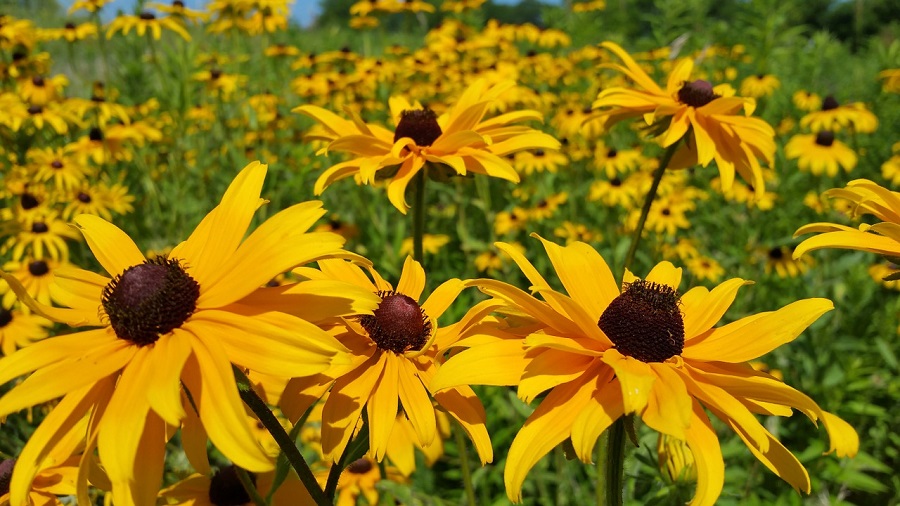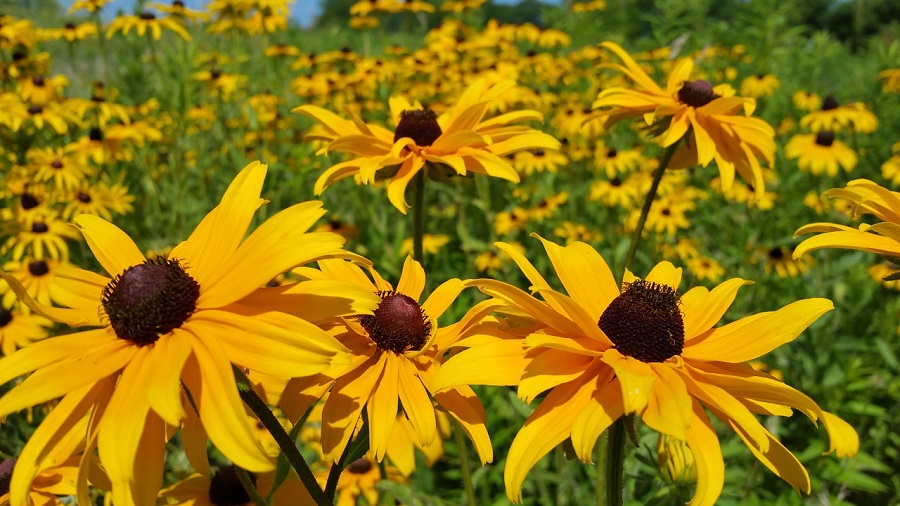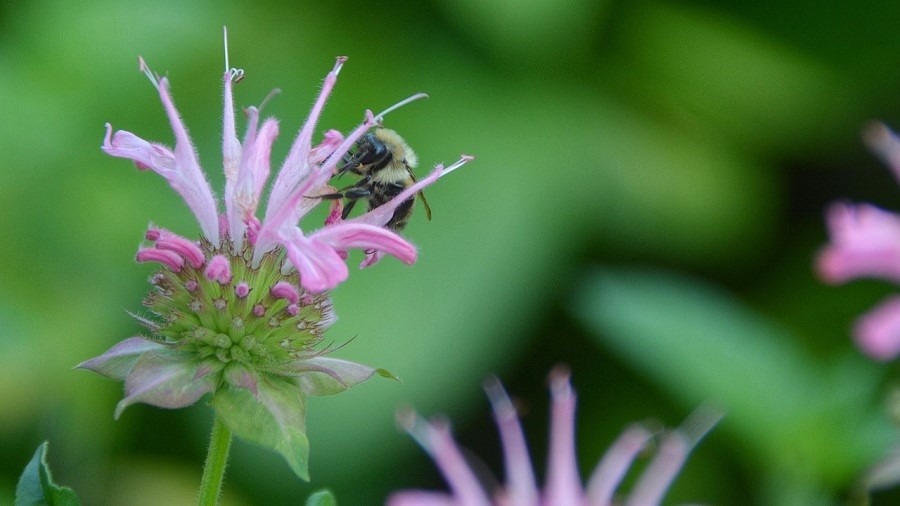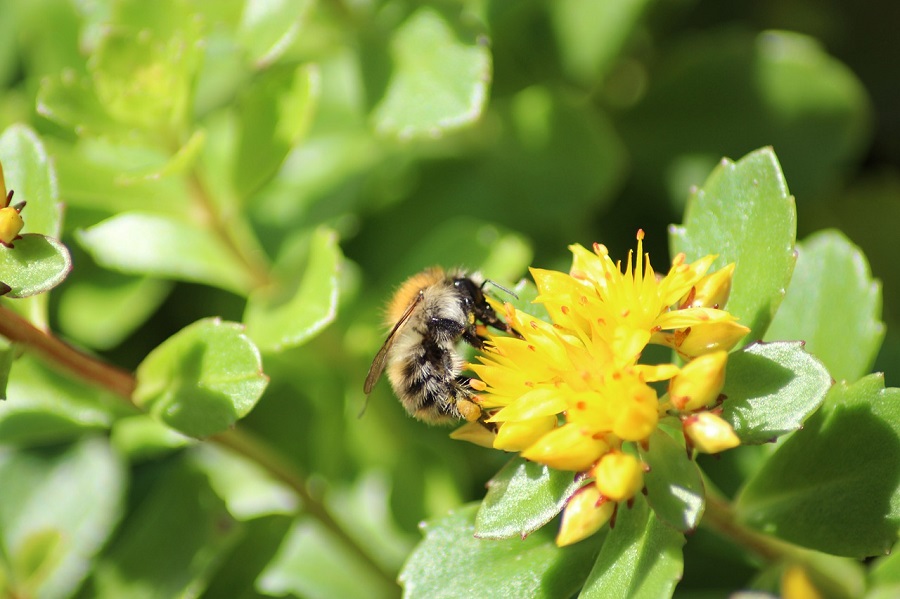
5 Pollinator-Friendly Plants You Can Grow Right Now
There are more than 200,00 species of pollinators — everything from honeybees and butterflies to bats, lizards, and beetles. You can support these valuable workers by planting pollinator-friendly plants in your garden.
Why should you support them? We need these flying, fluttering, and crawling creatures to help pollinate the food we eat. More than one-third of our food crops rely on pollinating animals to reproduce. Honeybees may just be worth their weight in gold. Their work as pollinators accounts for around $15 billion in added crop value.
Pollinators face a variety of threats. Habitat loss is one and it means loss of food sources and increased migratory distances. Some species are vulnerable to viruses or other pathogens. One of the biggest threats to pollinators comes from pesticides. Agricultural pesticide application is enormous, but home gardens can be a source of harm for pollinators, too, especially when pesticides are applied directly to blossoms.
Pollinators and flowering plants have the ultimate symbiotic relationship. Pollinators need the plants for their nectar and pollen, and plants rely on pollinators to reproduce their species.
Gardeners can support this symbiotic relationship by avoiding pesticides and supplying pollinators with their favored food sources. Here are five pollinator-friendly plants that are easy additions to your landscape.
Black-eyed Susan Blooms All Summer
Black-eyed Susan (rudbeckia) is native to North America and a favorite of gardeners. It blooms from early summer until the first frost, which makes it a reliable source of food for pollinators.

The pollinator-friendly plant grows up to three feet tall and produces 2-3” golden-yellow blossoms. Its flowers have what’s known as a landing platform; the shape of the flowers makes it easy for flying insects to rest their feet on the petals while they feed. Butterflies in particular appreciate a landing platform to use as they sip the nectar.
Black-eyed Susan also attracts beneficial insects like ladybugs and lacewings that keep troublesome garden insects in check. It’s a generous plant that will get bigger each year, providing even more food for pollinators in the future.
Clover Is Easy to Grow
As long as you have a patch of lawn somewhere in your yard, you can grow clover. Without you needing to do anything at all, clover will start to fill in empty patches in your lawn. The only thing you have to do is forgo the weed killer.

In early to mid-spring clover will start producing small, pom-pom-shaped flowers that honeybees love. Clover will continue to blossom throughout the summer, even after it’s mowed.
Want to really roll out the red carpet for honeybees? Seed your lawn with clover. A lot of people who have sorry-looking lawns find that clover grows better than traditional grass.
Clover is not native to North America, but it is considered naturalized because it’s adapted well without being invasive to native species. It can be grown throughout the United States.
Bee Balm Attracts Hummingbirds
Bee balm (monarda) is a favorite of hummingbirds, butterflies and, you guessed it, bees.

Native to zones 4-9 in the U.S., bee balm blooms from mid-summer to early fall. It’s a good companion plant for squash, beans, and tomatoes. Plant it nearby these veggies to increase yields.
Growing up to 4’ tall, bee balm really stands out in the garden. Its pink, purple, and scarlet blossoms are a gorgeous addition to a sun-soaked garden. When the hummingbirds find your bee balm, you can sit back, listen to the hum of their wings and marvel at the sight of them feeding.
Purple Coneflower Is Drought Resistant
Purple coneflower (echinacea purpurea) is known as a medicinal plant used by the first Americans. This pollinator-friendly plant also happens to be a champ in the perennial garden. It is native to most of the eastern United States. Other varieties of coneflower can be found as far west as Texas. Once established, it’s a hardy, drought-resistant plant.

Purple coneflower grows on top of long stalks and produces broad flowers that project upward. It attracts bees and butterflies when it bursts into bloom in early- to mid-summer. In the fall, birds will eat seeds from spent blossoms.
Sedum Are Steady Bloomers
There are many varieties of sedum (hylotelephium) that are native to North America. They vary in height from just a few inches to about two feet tall. Sedum, also known as stonecrop, will grow almost anywhere in your garden. They don’t like clay, but they can tolerate full sun and sandy or rocky soil. Sedum’s thick leaves store water, helping them survive in tough conditions. It has flat green foliage and tiny flowers clustered in rounded tufts.

Sedum flowers in early summer through the fall, attracting bees, butterflies, and another important pollinator, syrphid flies, or hoverflies. Hoverflies not only help pollinate plants; they lay their eggs near aphid colonies. When the eggs hatch, they help gardeners control aphids organically.
What pollinator-friendly plants will you grow this year?
Feature image by danuta niemiec from Pixabay. This article was originally published on July 13, 2021.